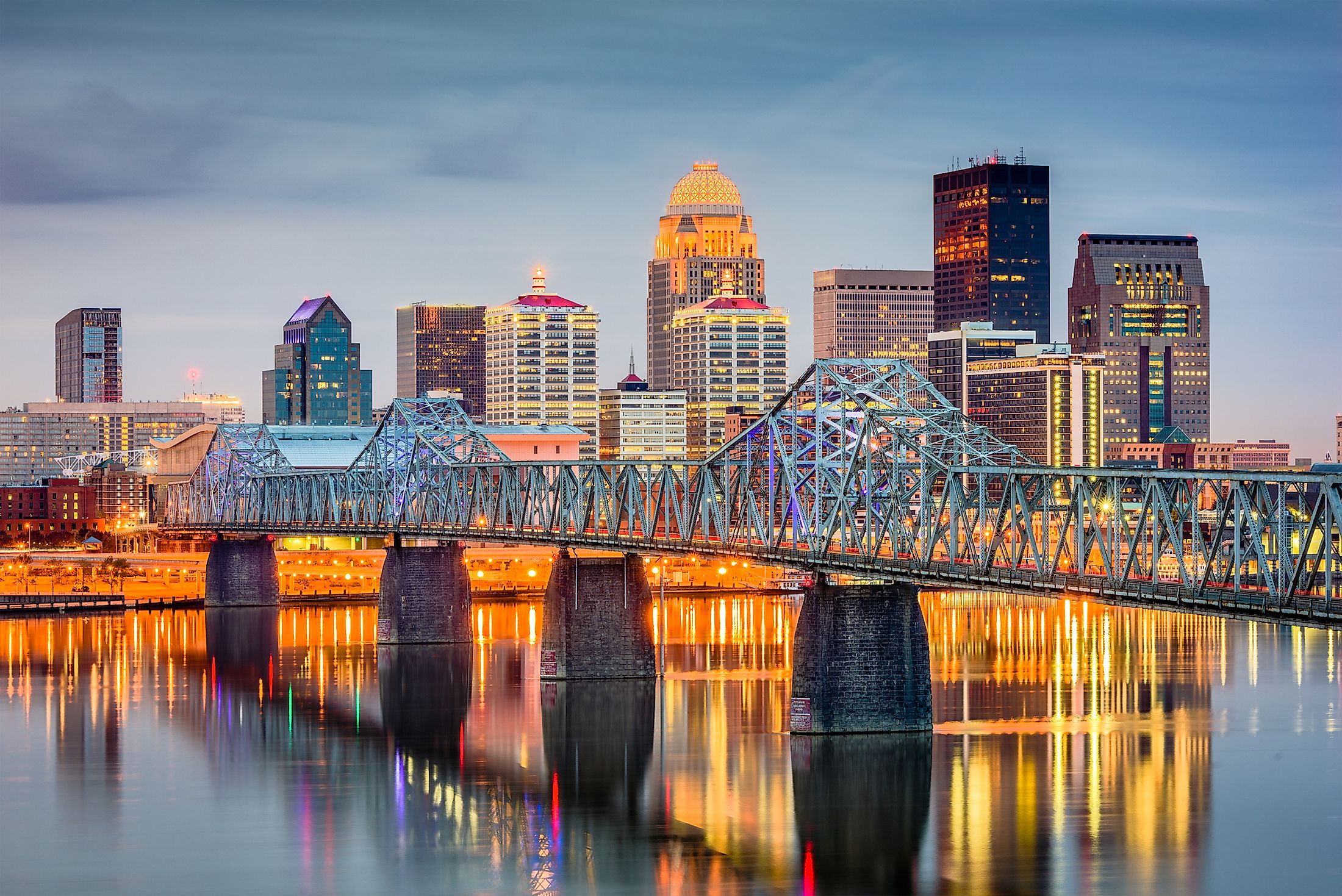
Louisville, Kentucky
Louisville is the largest city in the US State of Kentucky. It is the seat of Jefferson County and the center of a metropolitan area, which includes Jefferson County in Kentucky and Clark and Floyd counties in Indiana. Louisville is the 29th largest city in the United States and is home to a population of 615,067 people.
Geography of Louisville

The city of Louisville and Jefferson County have a combined area of 1,030 sq. km, of which 985.4 sq. km is occupied by land and 44.6 sq. km is occupied by water. The city is located along the boundary between Kentucky and Indiana, the Ohio River in north-central Kentucky at the Falls of Ohio. Louisville is situated in Kentucky’s Bluegrass region. Its location on the Ohio River helped the city grow from an isolated campsite into a major shipping port. A significant portion of the city is located on an extensive flat floodplain surrounded by hill country on all sides. Much of the city's area was built on was swampland that had to be drained as the city grew.
Climate of Louisville
The climate of Louisville is characterized by relatively high temperatures and evenly distributed precipitation throughout the year. According to the Köppen climate classification, the city experiences a humid subtropical climate, with springs and summers being the wettest seasons. The average temperature for the year in the city is 14.6°C. The warmest month in Louisville is July, with an average temperature of 26.3°C, and the coolest month on average is January, with an average temperature of 1.6°C.
The Population of Louisville

In 2020, Louisville had a population of 615,067 people with a population density of 2,335 people per square mile. The population has increased by 2.97% since the most recent census that recorded a population of 597,337 people in 2010. The largest ethnic groups in Louisville are non-Hispanic White representing 69.9% of Louisville’s population, followed by Black or African Americans at 23.60%, and Asians at 2.67%. The minor ethnic groups in the city are two or more races at 2.56%, other races at 1.03%, Native Americans at 0.17%, and Native Hawaiian or Pacific Islanders at 0.05%.

Louisville hosts religious institutions of various faiths. The majority of religious people in the city are Roman Catholics, most of whom are of German descent who immigrated back in the 19th century. About 30% of the population are Southern Baptist, many of whom came from Tennessee and rural Kentucky. The city also hosts religious institutions including Judaism, Islam, Buddhism, Hinduism, and Sikhism.
Brief History of Louisville

Captain Thomas Bullitt was the first European to arrive in the area in 1733. He came to survey the lands with a commission from the Governor of Virginia. A group of settlers settled on Corn Island in May 1778, along with officer George Rogers Clark during the American Revolution, who organized a base to conquer the British-held Old Northwest. The town was organized by the settlers who came with Clark in 1779 and named for Louis XVI of France. It was incorporated as a town the following year.

By 1811, Louisville had become an important trading and shipping river port by 1820. Louisville served as a military headquarters and a major Union supply depot during the American Civil War. During World War I, the economy was boosted when Camp Zachary Taylor was built nearby. The production of synthetic rubber was among the new industries established during World War II. In addition to synthetic rubber, the city produced paint, aluminum appliances, pottery, and automobiles.
Tourist Attractions in Louisville

The city of Louisville is a unique vacation destination that offers many activities and things to see, such as the races held at the famous Churchill Downs racetracks, a wide range of restaurants, the Kentucky Derby Museum, and the renowned Muhammad Ali Center.
Big Four Bridge

Visitors enjoy the Big Four Bridge in Louisville, a former railroad truss bridge, but currently, its access is limited only to pedestrian and bicycle use. The bridge spans over the Ohio River connecting Louisville with Jeffersonville in Indiana. The six-span bridge was constructed in 1895 and spans a length of 770 m and is 167 m. The bridge was converted into a pedestrian and bicycle bridge in 1969 and nicknamed the “Bridge That Goes Nowhere.”
Conrad-Caldwell House Museum
Visitors also enjoy the Conrad-Caldwell House Museum. The museum is an important house in the St. James-Belgravia Historic District in Old Louisville and was built in 1893. It was built for Theophile and Mary Conrad and was nicknamed "Conrad’s Castle." The building is made of Bedford limestone and was built in what is called the Richardsonian-Romanesque style. The exterior features pyramid, coned, and hexagonal-shaped towers and turrets in addition to many decorations like carved animals and gargoyles. The museum offers tours, and the house can be rented for special occasions such as weddings.











